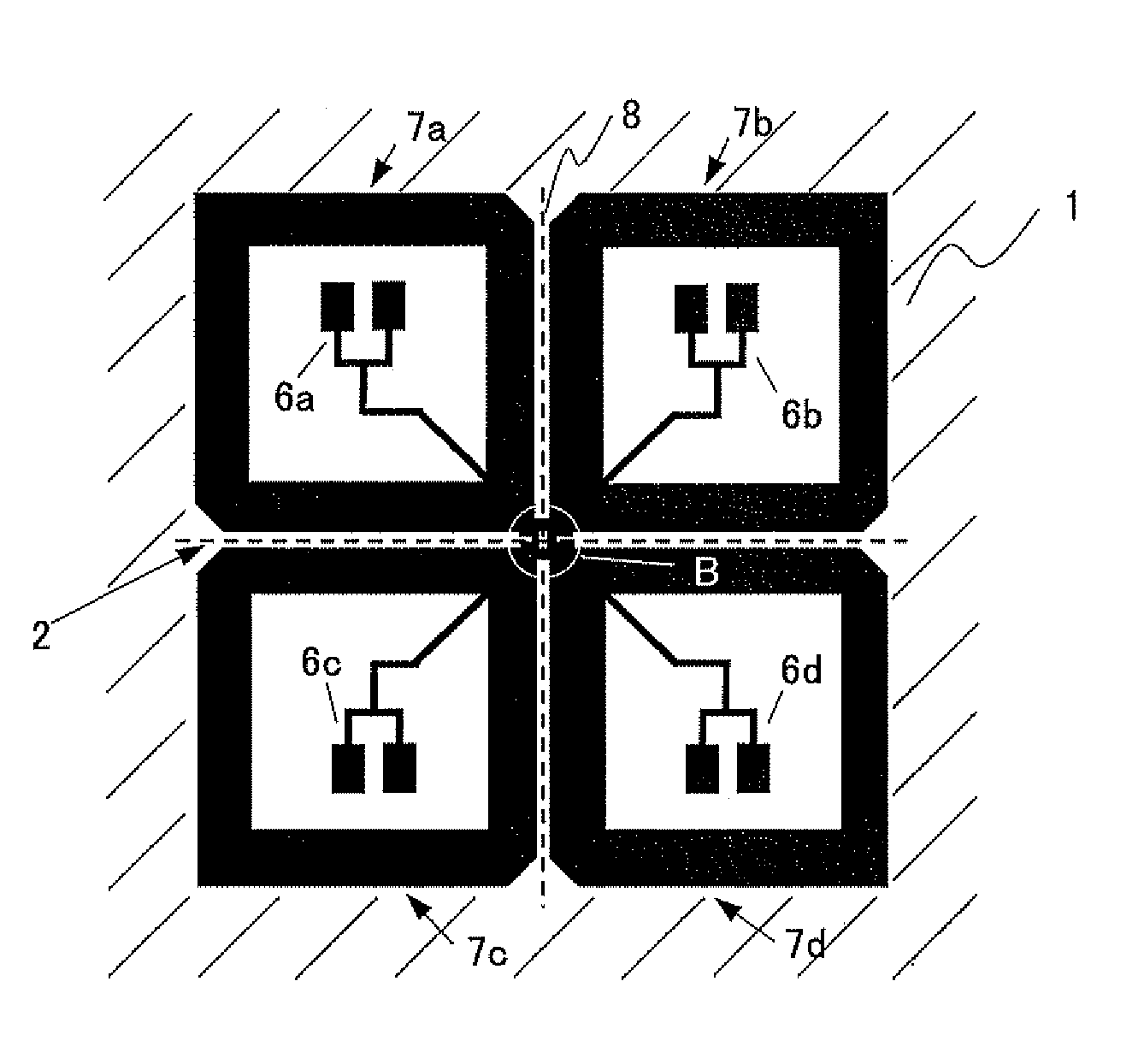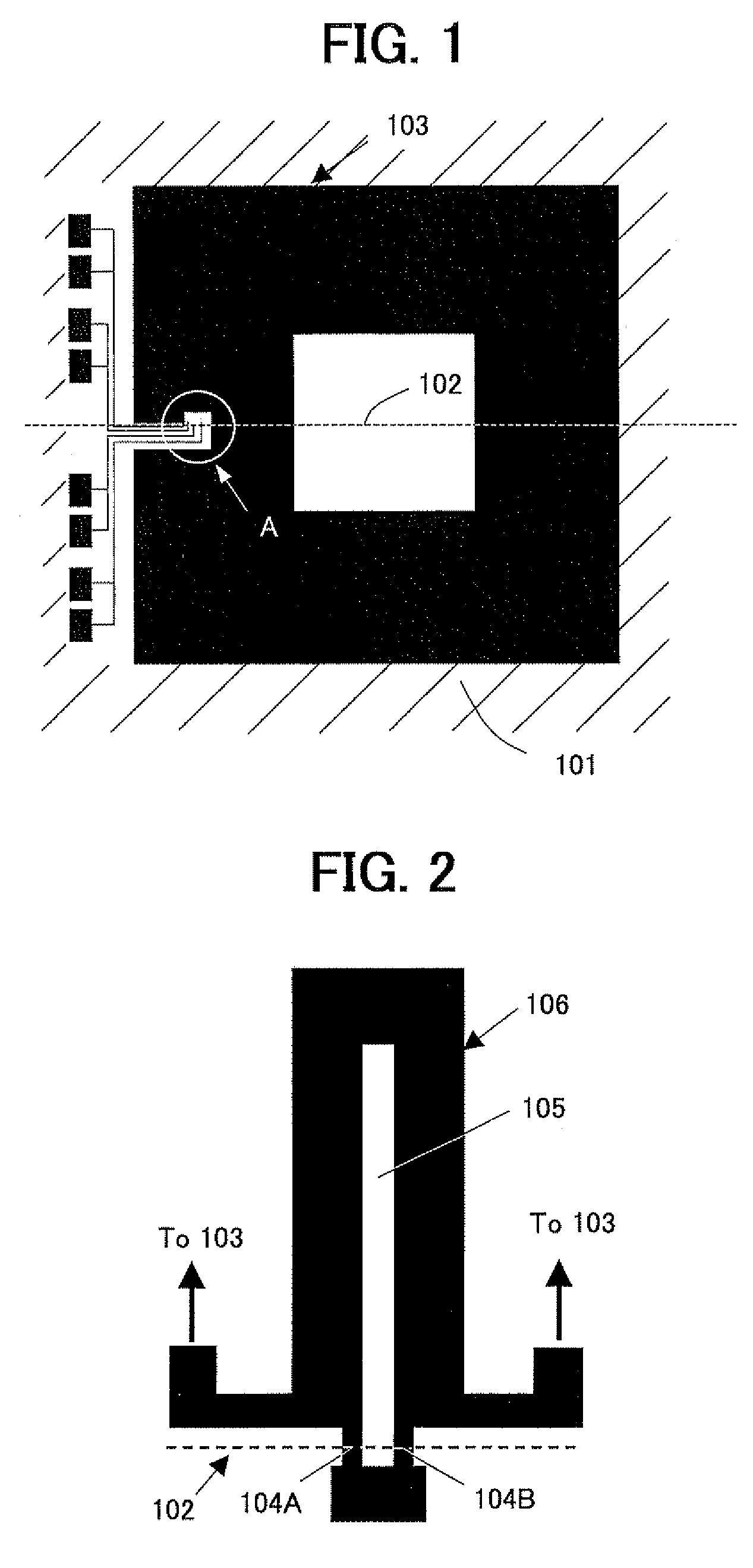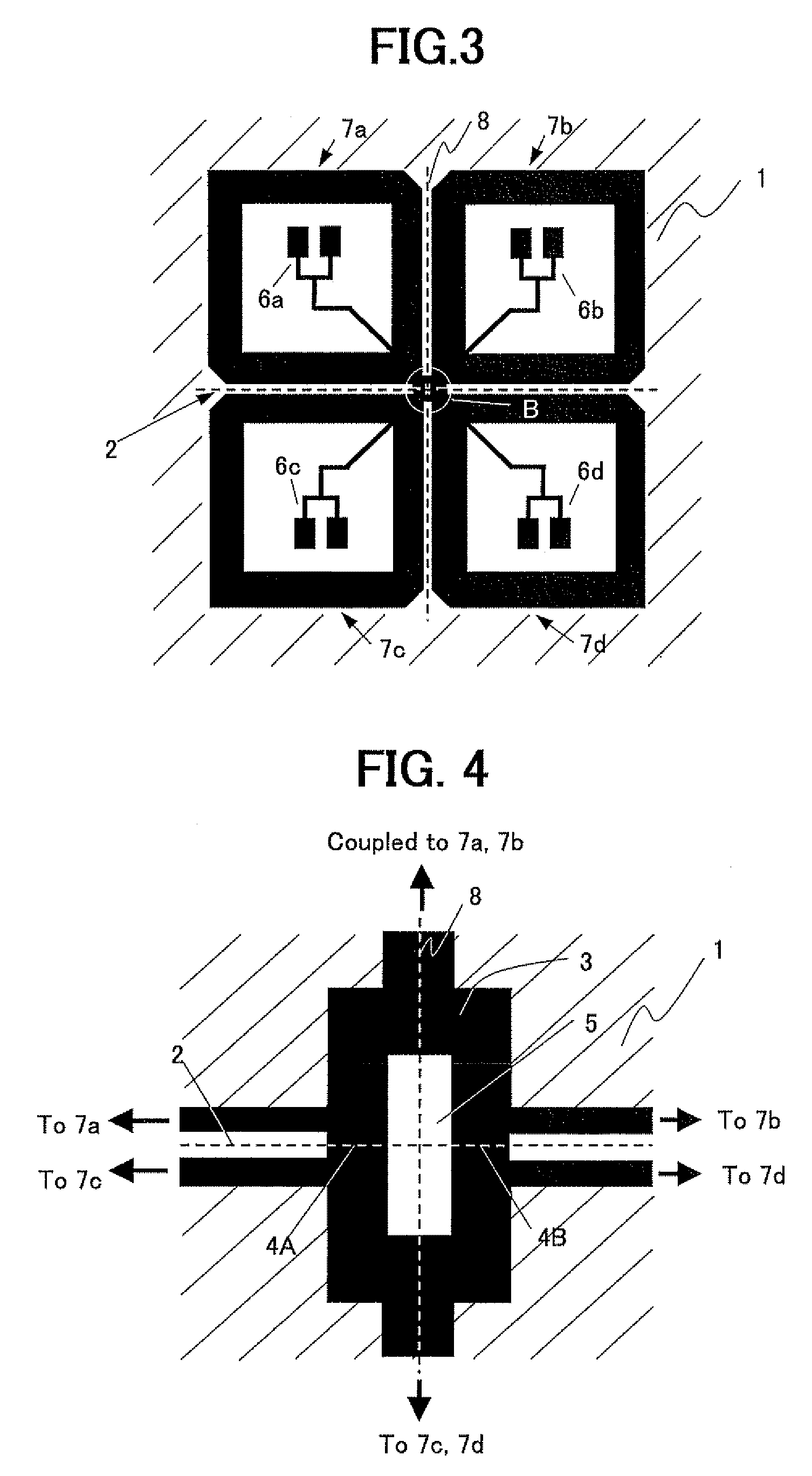SQUID magnetic sensor
a magnetic sensor and squid technology, applied in the direction of magnetic measurement, magnetic field measurement using superconductive devices, instruments, etc., can solve the problems of squid magnetic sensor long-time stability, sensitivity reduction, and performance degradation of squid magnetic sensor, so as to reduce the magnetic trapping in the squid ring area, small magnetic field measurement, and conduct stably
- Summary
- Abstract
- Description
- Claims
- Application Information
AI Technical Summary
Benefits of technology
Problems solved by technology
Method used
Image
Examples
example 1
[0037]The performance of the SQUID magnetic sensor was experimentally verified for the directly-coupled high-temperature superconductor SQUID magnetic sensor in the single thin film structure, as shown in FIG. 3, fabricated to have the size of each pickup loop of 1.5 mm×1.5 mm and the bi-crystal Josephson junctions, that was cooled using liquid nitrogen (boiling point of 77K). The result showed that, when the 100 Hz magnetic field was applied, the SQUID operated stably up to the magnetic field of 0.75 μT.
example 2
[0039]The performance of the SQUID magnetic sensor was experimentally verified for the directly-coupled high-temperature superconductor SQUID magnetic sensor in the single thin film structure, as shown in FIG. 3, fabricated to have the size of each pickup loop of 1.5 mm×1.5 mm and the bi-crystal Josephson junctions, that was cooled using liquid nitrogen (boiling point of 77K), and for the sensor as shown in FIGS. 5 and 6, fabricated to have the flip-chip structure of the bi-crystal substrate 11 and the SQUID magnetic sensor.
[0040]Table 1 shows characteristics of the SQUID sensor with and without the superconducting thin film mounted thereon. For the SQUID magnetic sensor without the superconducting thin film, critical current, amplitude of external magnetic field at which the SQUID magnetic sensor becomes to operate unstably, effective flux trapping area, and a white flux noise level were 14 μA, 0.75 μT, 0.066 mm2, and 20 μφ0 / Hz1 / 2 respectively. On the other hand, for the same SQUID...
PUM
 Login to View More
Login to View More Abstract
Description
Claims
Application Information
 Login to View More
Login to View More - R&D
- Intellectual Property
- Life Sciences
- Materials
- Tech Scout
- Unparalleled Data Quality
- Higher Quality Content
- 60% Fewer Hallucinations
Browse by: Latest US Patents, China's latest patents, Technical Efficacy Thesaurus, Application Domain, Technology Topic, Popular Technical Reports.
© 2025 PatSnap. All rights reserved.Legal|Privacy policy|Modern Slavery Act Transparency Statement|Sitemap|About US| Contact US: help@patsnap.com



